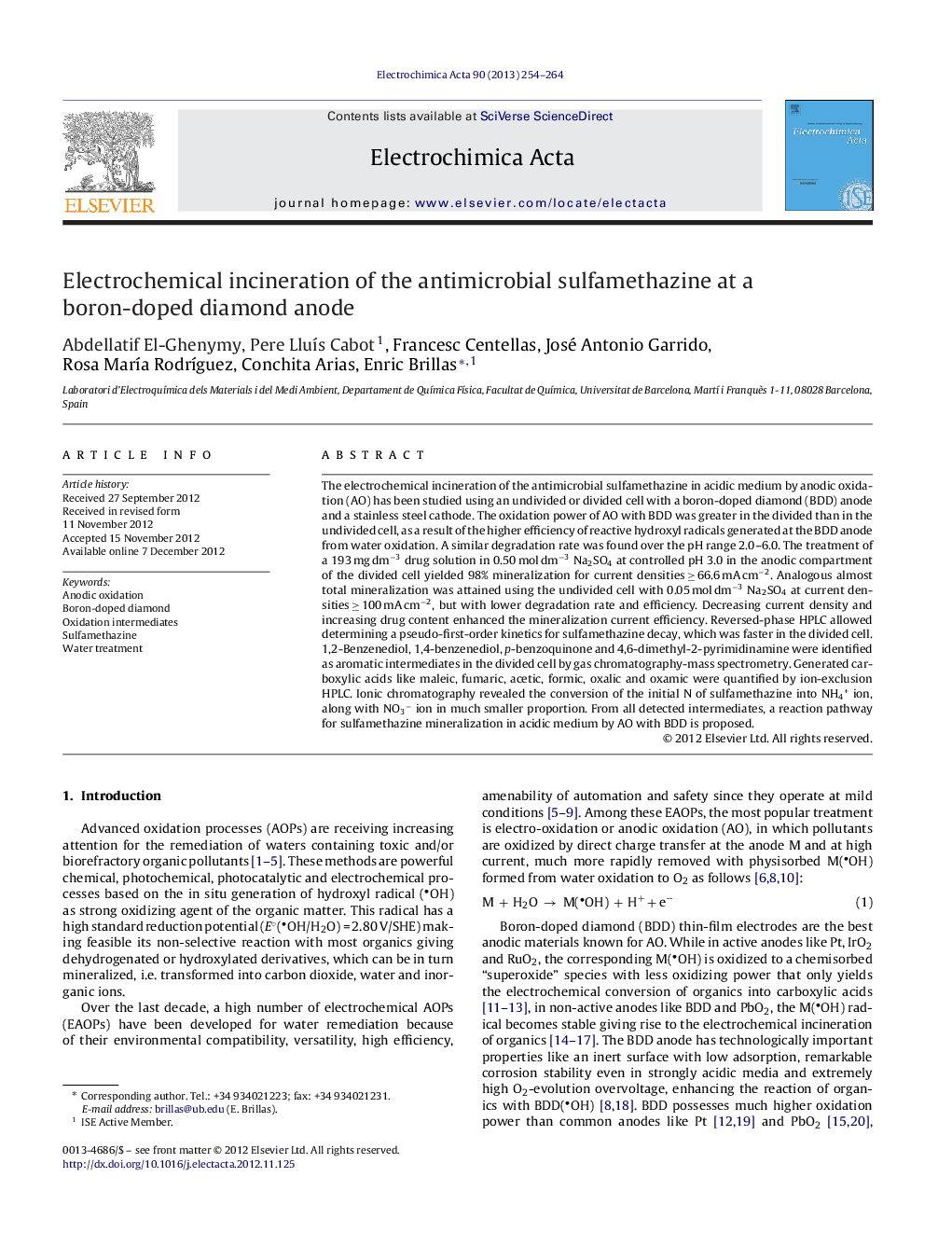| کد مقاله | کد نشریه | سال انتشار | مقاله انگلیسی | نسخه تمام متن |
|---|---|---|---|---|
| 187447 | 459643 | 2013 | 11 صفحه PDF | دانلود رایگان |

The electrochemical incineration of the antimicrobial sulfamethazine in acidic medium by anodic oxidation (AO) has been studied using an undivided or divided cell with a boron-doped diamond (BDD) anode and a stainless steel cathode. The oxidation power of AO with BDD was greater in the divided than in the undivided cell, as a result of the higher efficiency of reactive hydroxyl radicals generated at the BDD anode from water oxidation. A similar degradation rate was found over the pH range 2.0–6.0. The treatment of a 193 mg dm−3 drug solution in 0.50 mol dm−3 Na2SO4 at controlled pH 3.0 in the anodic compartment of the divided cell yielded 98% mineralization for current densities ≥ 66.6 mA cm−2. Analogous almost total mineralization was attained using the undivided cell with 0.05 mol dm−3 Na2SO4 at current densities ≥ 100 mA cm−2, but with lower degradation rate and efficiency. Decreasing current density and increasing drug content enhanced the mineralization current efficiency. Reversed-phase HPLC allowed determining a pseudo-first-order kinetics for sulfamethazine decay, which was faster in the divided cell. 1,2-Benzenediol, 1,4-benzenediol, p-benzoquinone and 4,6-dimethyl-2-pyrimidinamine were identified as aromatic intermediates in the divided cell by gas chromatography-mass spectrometry. Generated carboxylic acids like maleic, fumaric, acetic, formic, oxalic and oxamic were quantified by ion-exclusion HPLC. Ionic chromatography revealed the conversion of the initial N of sulfamethazine into NH4+ ion, along with NO3− ion in much smaller proportion. From all detected intermediates, a reaction pathway for sulfamethazine mineralization in acidic medium by AO with BDD is proposed.
► Sulfamethazine attains almost total mineralization by anodic oxidation with a BDD anode.
► A divided cell presents higher oxidation power than an undivided one.
► Lower current density and more drug content give higher mineralization current efficiency.
► 1,2- and 1,4-benzenediol, p-benzoquinone and 4,6-dimethyl-2-pyrimidinamine are aromatic intermediates.
► Maleic, fumaric, acetic, formic, oxalic and oxamic acids are the final carboxylic acids.
Journal: Electrochimica Acta - Volume 90, 15 February 2013, Pages 254–264